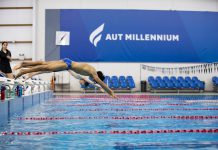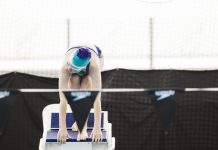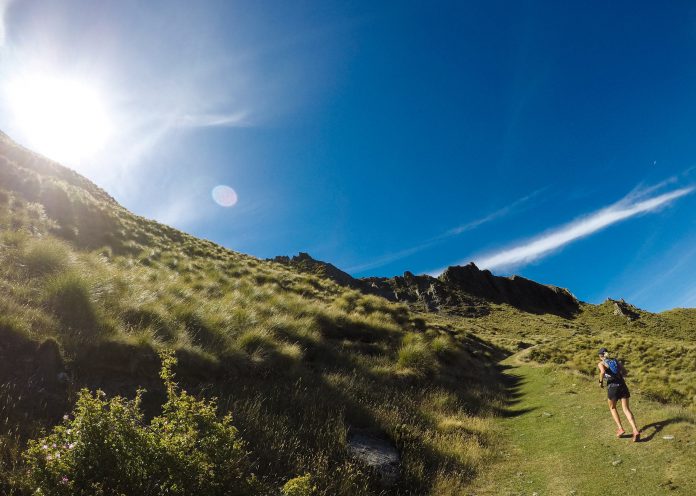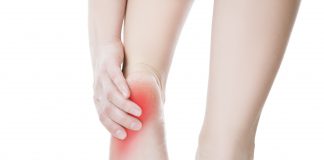Whilst the summer months grace us with dry trails and a renewed desire to explore, there is one battle that runners must face: the heat. Dealing with heat in your training sessions can be a real issue, and if you are (like me) not an early morning runner, then it is likely you will have to face midday sun. Heat poses as an extra challenge for the body, but training in the heat can also be beneficial for the endurance athlete. To reap the benefits, it is important to be aware of the risks involved with training in hot conditions, and how to mitigate them.
| Benefits
Improved thermal comfort Better sweat response = Better cooling Lower core temps during exercise in the heat
|
Risks
Overheating Loss of fluid (dehydration) Higher glycogen use Delayed recovery Compromised exercise intensity |
How to beat the heat
Acclimation. Unsurprisingly, training in a naturally hot environment or a controlled environment (like a sauna) primes you to run efficiently in hot climates. For runners that are traveling from winter to compete in a summer race, training in a controlled environment can be beneficial. Performance can decrease by around 10% when competing and training in the heat. Lack of proper of acclimation could affect performance even more, and present health risks. Many endurance athletes complete 7 to 14 days of repeated workouts in temperatures above 30C in moderate to high humidity to adapt. If you have just arrived in a hot environment, I would suggest starting with easy intensity (e.g. 60-90 min running sessions), and after completing 2-3 sessions, adding some high-intensity workouts.
Sports science looking at other means of controlled heat acclimation strategies has found that sauna and hot-water immersion could substitute naturally hot environments. Both strategies reduce core temperature and cardiovascular strain after several days of exposure and bring desirable physiological adaptations.
| Sample training and acclimation week | ||||||
| Monday | Tuesday | Wednesday | Thursday | Friday | Saturday | Sunday |
| 60min run at @easy pace
|
60min run at @easy pace | Fartlek session in the heat (30C) using short 30-60s intervals | 60min run at @easy pace | Threshold session in the heat (30C) using 5-10min intervals | Recovery day | Long run (2-3hr) in hot or normal weather conditions |
| 20-30min post-exercise Sauna
|
30min post-exercise Sauna
|
30min post-exercise Sauna
|
||||
Choose the best time of the day. Avoid midday heat by training early in the morning or late in the afternoon. If this is not possible, consider modifying the duration and intensity of the session to shorter and easier on really hot days.
Pre-cooling and cooling. If running in the full heat is unavoidable, pre-cooling could mitigate risks of overheating. Beginning the session with a lower core temperature may prolong the session’s duration. This can be achieved by applying ice towels or taking a cold shower or bath before running. Partially freezing your water or electrolytes is a simple way to get some reprieve from the heat during your run.
Hydrate beforehand. If you feel thirsty before leaving home, make sure you drink a few glasses of water or electrolytes. Sweating rate varies from 1 to 3 litres per hour on a hot day– (a significant increase to the 500mL – 1.5L that one would sweat on a cool day). Sweating is the most efficient cooling mechanism that your body can offer. Assuming normal hydration levels before the run, there is little risk of getting into serious dehydration if your run lasts about 1 hour. Plan your water access points if you are running 1.5+ hrs. I like to take one or two handheld bottles, or a small and light hydration pack with me, and always check whether I will have access to water. Streams that you can see on the map are sometimes dry during the summer season (and if they run through farmland you should not drink from them), so it pays to be prepared. For city runners, water is more accessible – and if you plan your route to pass by water fountains, you can complete even a 40km training run without having to carry all your water with you.
Re-hydration. Restoring fluid loss during exercise is an important part of the recovery process. Adding electrolytes to water improves fluid palatability and natural thirst response, as well as fluid retention in kidneys. Drinking 100% to 150% of fluid for each kilogram of body mass loss during exercise will ensure full rehydration. If you don’t know how much water you lose during exercise in the heat, measure your body mass prior and after the exercise (best naked). Controlling your alcohol consumption is also important. Alcohol has a diuretic effect (that is, it washes water from your body), so consuming alcohol in an already dehydrated state could put you even in worse condition and seriously impair your recovery.
Modify your diet. Training in the heat burns more glycogen (i.e. muscle carbohydrate stores), so it is important to replenish these stores to aid recovery. The best strategy to ensure good glycogen recovery is not to delay your post-exercise meal. Muscles absorb glucose much faster in the first 2 hours after exercise, so have something ready immediately after you are back from you run. I like foods that are not only energy dense but also nutritious, have electrolytes and fibre in them. Good examples are: fruit smoothie, raw or dried fruits, salad with added kumara or sweet potato, etc. Add some protein to your meal (fish, eggs, cheese, meat or similar) to aid muscle recovery and protein synthesis. If you want to be diligent with your nutrition, it is recommended to consume 1-1.2 grams of carbohydrates for each kilogram body weight during the first 4 hours of recovery. *If you are following a low-carb dietary program or “train low” strategy this advice may not apply to you.
One last thing: Don’t forget your hat, sunscreen and sunglasses. These will help to minimise the risk of sunburn and sunstroke.







































